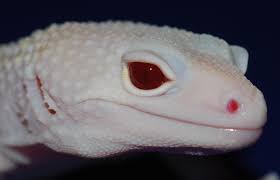GECKO WHITE KNIGHT (Eublepharis macularius)
$200.00
Full Description
Here is a complete White Night Leopard Gecko (Eublepharis macularius) care guide. The “White Night” is a designer morph, typically resulting from combinations of white/yellow, eclipse, and blizzard traits. It’s known for its pale body coloration, sometimes with lavender or bluish undertones, giving it a unique, icy appearance.
White Night Leopard Gecko Care Guide
Morph Overview
| Trait | Description |
|---|---|
| Common Name | White Night Leopard Gecko |
| Scientific Name | Eublepharis macularius |
| Morph Group | Designer morph (likely Blizzard × Eclipse × White & Yellow lines) |
| Appearance | Pale white or lavender-gray body, sometimes patternless, may have dark eyes (if Eclipse trait is present) |
| Experience Level | Beginner to Intermediate |
Size & Lifespan
| Feature | Range |
|---|---|
| Adult Length | 7–10 inches (18–25 cm) |
| Adult Weight | 50–80 grams |
| Lifespan | 15–20+ years with proper care |
Enclosure Setup
Enclosure Size
| Gecko Stage | Recommended Tank Size |
|---|---|
| Juvenile | 10–20 gallons |
| Adult | 20–40 gallons (horizontal layout) |
Substrate Options
| ✅ Safe | ❌ Avoid |
|---|---|
| Slate or ceramic tile | Loose sand |
| Paper towels | Calci-sand |
| Reptile carpet | Bark, mulch, or coconut husk |
| Bioactive (for experienced keepers) | Gravel or anything sharp |
Essential Enclosure Items
-
3 hides (warm, cool, humid)
-
Shallow water dish
-
Low-climbing decor and rocks
-
Optional dim lighting for night viewing
-
Moist hide with moss for shedding
️ Temperature & Humidity
| Zone | Temp (°F) | Temp (°C) |
|---|---|---|
| Warm side | 88–92°F | 31–33°C |
| Cool side | 75–80°F | 24–27°C |
| Nighttime | 68–72°F | 20–22°C |
| Humidity | 30–40% ambient; 70–80% in moist hide |
Heat source: Under-tank heater (UTH) with thermostat
Tools: Infrared temp gun + digital thermometer
Avoid: Heat rocks and overhead basking bulbs (may cause stress)
Lighting
-
UVB is optional but beneficial (use 2–6% linear UVB)
-
Maintain a 12-hour day/night cycle
-
Avoid intense lighting to preserve pale coloration
-
Optional dim blue or red LED for nighttime viewing
Feeding & Nutrition
Insect Feeders
-
Primary: Dubia roaches, crickets, mealworms
-
Occasional: Black soldier fly larvae, superworms, waxworms (as treats)
Feeding Frequency
| Age | Feeding Schedule |
|---|---|
| Juveniles | Daily |
| Adults | Every 2–3 days |
Supplements
| Supplement | Frequency |
|---|---|
| Calcium (no D3) | Always available |
| Calcium + D3 | 1–2× per week |
| Multivitamin | 1× per week |
Always gut-load insects with nutritious food before feeding.
Maintenance Routine
| Task | Frequency |
|---|---|
| Spot clean waste | Daily |
| Water refresh | Daily |
| Humid hide check | 2–3× weekly |
| Full clean | Every 3–4 weeks |
Morph-Specific Notes
| Feature | Notes |
|---|---|
| Color Preservation | Avoid excessive UV or intense light that may dull coloration |
| Eclipse Trait | May result in solid black eyes (“snake eyes”) |
| Blizzard Influence | May cause near-patternless appearance |
| White & Yellow Influence | Contributes to brightness and hypo traits |
| Health Risks | No known morph-linked genetic defects (unlike Enigma) |
Handling Guidelines
-
Begin handling 1–2 weeks after setup/acclimation
-
Start with 5–10 minutes every other day
-
Handle during evening hours (they are crepuscular)
-
Support body fully and avoid tail grabbing
-
Avoid handling during shedding cycles
✅ Quick Care Summary
| Aspect | Recommendation |
|---|---|
| Tank Size | 20–40 gal (horizontal preferred) |
| Substrate | Tile, paper towel, reptile carpet |
| Heat Gradient | 88–92°F warm side, 75–80°F cool side |
| Lighting | Low UVB optional; no intense light |
| Humidity | 30–40%, 70–80% in moist hide |
| Diet | Gut-loaded insects + calcium/D3 |
| Behavior | Docile, curious, sensitive to light |

